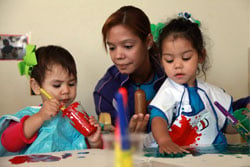
What are open-ended prompts? Open-ended prompts are questions or statements that support children’s verbal and nonverbal communication. The purpose ...

What are open-ended prompts? Open-ended prompts are questions or statements that support children’s verbal and nonverbal communication. The purpose ...